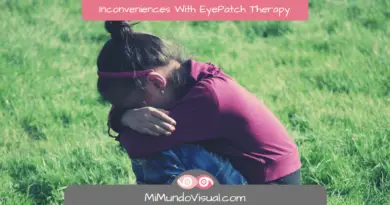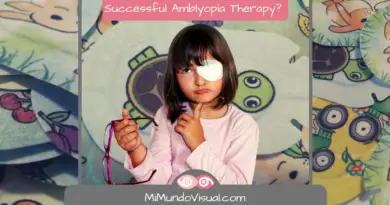5 Activities To Do While Wearing An Eye Patch
Table Of Contents
All About Amblyopia Eye Patch Therapy
- 7 Tips On How To Be Successful With Amblyopia Therapy For Your Child
- How To Remove An Eye Patch Without Pain?
- 6 Eye Patch Therapy Inconveniences We Are Not Told About
- How To Choose The Best Eye Patch For My Child?
- 5 Activities To Do While Wearing An Eye Patch
Download Free Amblyopia Guide
There are certain activities that can be done to strengthen the lazy eye while the other eye is covered with a patch. Therefore, we have listed 5 activities we can do with our child while they are wearing an eye patch at home.
The ophthalmologist diagnosed our child with amblyopia. Our daughter was told to wear the patch several hours a day. If you are here, we assume you are in a similar situation, and you are aware that wearing the eye patch is quite a challenge for our kid.
Our child may sometimes find it annoying to wear it for so long.
With this in mind, we found that it helps to take advantage of this situation and play or do activities with them while wearing the eye patch.
This will provide some much-needed positive reinforcement and motivation for your child as it can associate wearing the eye patch with enjoying quality time with their parent or caretaker. While at the same time strengthening the weak eye thanks to the activities we do or games we play.
1. Playing with a Ball or Balloon
One of the symptoms of Amblyopia is clumsiness and poor coordination. The lack of coordination in the eyes to poor hand-eye coordination. So playing with a ball with our child will not only be enjoyable for them, but it also helps them to develop better hand-eye coordination abilities.
- So pick up a ball and choose a distance that makes it easy for your child to catch the ball.
- Remember that this simple game can be challenging for them, so include a lot of positive reinforcement!
- The simple fact of making passes and throws can already be a very fun game for both, and it helps to gradually build your kids’ confidence as they will learn to catch the ball easier and at a further distance.
- We can also choose to substitute the ball for a balloon.
- We inflate a balloon and throw it in the air, and the goal is to hit it back into the air before it hits the ground. Kids tend to love this!
- If we want to increase the difficulty, instead of one balloon, we inflate several of them. None can touch the ground!
2. Marcar la letra O
- For this activity, we write a text with an initial letter size of 16 and print it. Remember, you can make it a fun text, a story of some kind. This activity works best when kids are old enough to identify letters and read.
- To add some joy to this experience, let your kid choose their favorite colored pencil!
- Once the text and the chosen color have been printed, we ask the child to identify and mark all the letters O with their favorite color.
- If we want to make it more fun, we can time it and include an official countdown 3,2,1…
We will count the number of O’s they found within a given period. - To make it more complicated and challenging, we can incorporate the number 0 or add other letters similar to O, for example, G or D. This will make the eye have to look more closely at the details of each letter.
- To add further difficulty, we can also decrease the size of the letter.
3. Jenga or Wooden Blocks Game
- Jenga is the classic wooden block game, which consists of creating a tower of wooden blocks and trying to remove block by block without the tower collapsing.
- There is an alternative version of the game for younger children, that version specially designed for children between 3 and 8 years old. Here, the blocks are made in different colors and with different animals in each group of blocks.
- This game not only helps develop hand-eye coordination but also stimulates the child’s creativity and reasoning, fine motor skills, and problem-solving skills.
4. Making Bracelets or Embroidery
We can take advantage of having the patch on to make beautiful bracelets and necklaces.
- All we need are colored beads and a flexible string.
Inserting a string into the little holes of each ball will strengthen hand-eye coordination. - If our child is old enough, we can also teach them to embroider on fabric or paper.
It is an activity that develops both hand-eye coordination and fine motor skills. - It is a very challenging exercise to introduce the thread through the tiny hole of the needle with only one eye.
5. Doing Homework or Painting
Many young children don’t like to do their homework alone but would rather have mom or dad sitting next to them to watch them do their homework instead of being in the kitchen or working in the office.
- If it is at all possible, try to be nearby your child as they are doing homework while wearing the patch.
- Doing homework with the eye patch on stimulates the lazy eye while writing, reading, and painting,…
- Our presence will help them remain motivated as they show you what they have learned during the day at school.
- Being by their side in a relaxed and unhurried manner will strengthen moments of connection between parent and child. Remember that all these tasks are more difficult with the ‘dominant’ or ‘good’ eye covered.
- If our little one is not yet old enough to do homework, we can always make a drawing with him using colors or paints. They will love this!
Hopefully, these activities and games have inspired you to create your own play sessions with your child while wearing the eye patch.
Who says wearing the patch at home is boring and annoying? It’s a great time to spend time as a family and enjoy playing together.
However, we would like to remind you that these activities and games are not part of any routine reviewed by an eye care professional. They are simply ideas drawn from our own experience and inspiration we found from an exercise book called ‘45 Lazy Eye Exercises‘ by Tammie Taylor, a mother of an amblyopic child.
More about amblyopia in children
- 7 Tips On How To Be Successful With Amblyopia Therapy For Your Child
- How To Remove An Eye Patch Without Pain?
- 6 Eye Patch Therapy Inconveniences We Are Not Told About
- How To Choose The Best Eye Patch For My Child?
- Contact Lenses For Children With Lazy Eye?
- Prepare For Your Visit With the Eye Doctor?
Download Free Amblyopia Guide





